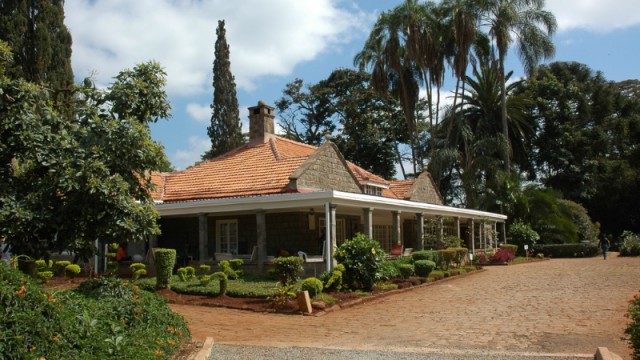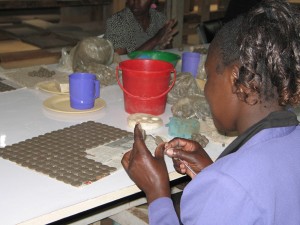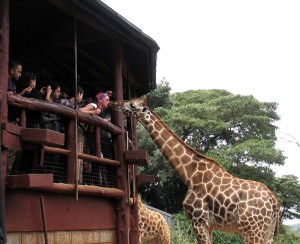A trip to Nairobi wouldn’t be complete without a day spent in and around Karen, an affluent neighborhood in the western part of Kenya’s capital.
Separated from the rest of the city by the densely forested Ngong Road Forest, the area has an English country feel. Houses are arranged on five-acre lots with stone walls and wrought iron gates and streets are lined with eucalyptus trees. Many of the houses have stables, and horses graze in fields.
It’s still being debated whether Karen is named for the author of “Out of Africa” or for her less famous cousin, also named Karen. One thing is clear: the author Karen Blixen is well remembered here.
The centerpiece of the neighborhood is the Karen Blixen Museum. It pays homage to the woman born Karen Christenze Dinesen in Denmark, and is located in the house where much of the action that’s depicted in the 1985 movie “Out of Africa” took place.
Blixen lived a life marked by triumph and tragedy. She married her second cousin, the Swedish Baron Bror von Blixen-Finecke, and they moved to what was then British East Africa in 1914. A coffee plantation, incorporated as the Karen Coffee Company, was set up for them with family money. Her uncle was chairman of the board, and he named the firm presumably after his own daughter (the other Karen).
After Karen Blixen’s separation and divorce from the baron, she had an affair with English big-game hunter and celebrated safari guide Denys Finch Hatton (in the film, which covered those years in Africa, she was portrayed by Meryl Streep and Finch Hatton by Robert Redford).
Double tragedies struck in 1931: Finch Hatton was killed in an airplane crash and the coffee plantation failed. The land was sold and Karen Blixen returned to Denmark, where as a writer she was better known as Isak Dinesen.
Now part of the Nairobi National Museum, the Karen Blixen Museum is open to the public daily from 9:30 a.m. to 6 p.m., including weekends and public holidays. It’s significant not only for its most famous occupants, but also for its architecture. The house is typical of the late 19th century country houses built in Kenya by Europeans, which include spacious rooms, horizontal layout verandas, a tile roof and stone construction. Many of the furnishings on view belonged to the author.
Karen’s other claim to fame is the Kazuri Beads factory. Begun in 1975 by another European expat, Lady Susan Wood, it was started to provide a livelihood for single mothers. Two employees in a small workshop in an estate’s backyard have become more than 400 who work in a factory that ships its products to 30 countries worldwide (including the United States).
Kazuri, which means “small and beautiful” in Swahili, produces exquisitely handmade ceramic beads and pottery. The company, owned by Regina Newman since 2001, provides an on-site medical clinic and other social services for its otherwise disadvantaged employees.
Stop by when you’re in Karen. Take time for the factory tour. The women shape and glaze the beads and other items using clay from the Mount Kenya area. Once you enter the adjacent shop, you’ll understand the hours of work that go into producing the beads, which come in a variety of styles and seemingly endless colors from neutral whites, blacks and beige to riotous yellows, reds and purples. Some are single hues; others have dots or stripes squiggles. Some have an elegant iridescent sheen or a touch of gold. They’re strung in a multitude of patterns and hung in color families in their shop.
Art lovers should also stop by the Matbronze Wildlife Art Gallery and Foundry when in Karen. The gallery features creations by Denis Mathews, who works primarily in bronze. While there are some small items (I bought some lost-wax-cast buttons with the imprint of a lion’s paw) most of his items are massive in scale (think: elephant) and in the several thousand dollar price range. I was tempted by the life-size crocodile, which certainly would stop traffic in the States.
On your way to or from Karen drop into the Kitengela Hot Glass Studios, which is not in the neighborhood, but is nearby. This venture was started in the early 1990s by Anselm Croze, who trained in the Netherlands with glass masters Willem and Bernard Heesen.
It wasn’t easy, but Croze improvised a unique glass studio in Kenya. He and a Finnish glassblower named Mikko Merikallio, who was also a furnace-builder and inventor, devised a their own furnace for Kitengela, creating a steam-injected system that utilized recycled engine oil for fuel — no electricity involved.
Croze now employs 35 people to produce a variety of hand-blown glass items, including the elegant salt cellars and candle holders on tables in the top restaurants of Nairobi (including the Tamarind and those in Fairmont The Norfolk Hotel).
Also on the way to Karen are two more must-stops: the David Sheldrick Wildlife Trust and the AFEW Giraffe Center.
The Sheldrick operates an orphanage for elephants whose mothers were killed by poachers intent on bagging ivory. Plan to be there a bit before 11 a.m., so that you have a chance to see the young elephants in their care (they’re shown to visitors for just one hour at midday).
Not far away is the Giraffe Center, run by the African Fund for Endangered Wildlife. A viewing platform takes visitors up to eyeball level with the gentle creatures. The staff hands out bags of food pellets you can hand-feed to the Rothschild giraffes, whose long tongues come as quite a surprise to visitors. Teenaged girls often engage in “contests” to see who can get the most giraffe kisses; that is, they place the food pellets between their lips and let the giraffes lick them off.
Speaking of eating, there are two highly rated choices in Karen.
At the top of the list is the Talisman, a 21st century version of a caravanserai (the restaurant, not the hotel, part). The furnishings are vaguely Silk Road, recalling Kenya’s history as a trade route from China and India to the interior of Africa, but the food tends toward British colonial.
The second is the Tamambo Karen Blixen Coffee Garden, close to the Karen Blixen Museum. It’s operated by the same group that owns the Tamarind and the Carnivore.






